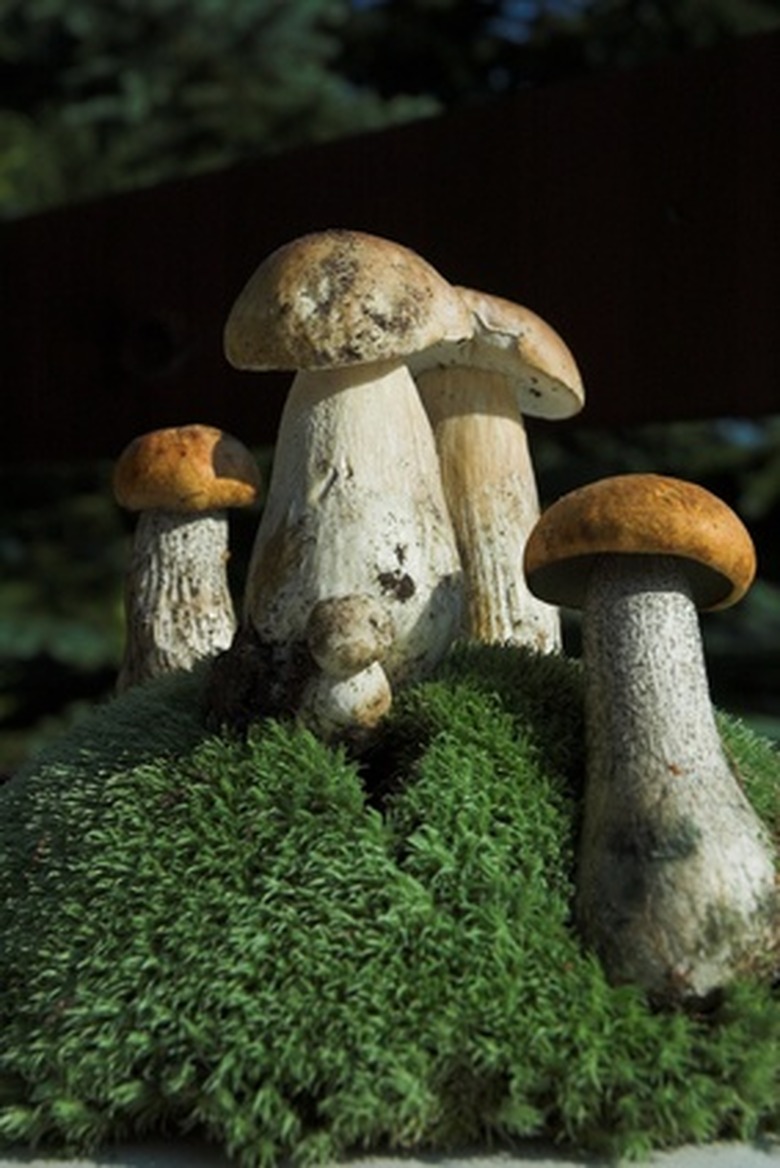Types Of Garden Fungus
Organisms that fall into the fungal lineage include more than 70,000 known species, although scientists think the numbers may exceed 1.5 million. Some fungi help the garden by decomposing organic matter and releasing nutrients for plant growth. Other fungi cause problems, attacking leaves and other plant parts and eventually destroying them.
Powdery Mildews
Resembling a sprinkling of flour on grass and flowers, powdery mildew remains one of the most easily recognized plant diseases. The fungus affects almost every type of plant in the garden including flowers, shrubs, fruit trees and grasses. The mildew also bothers vegetable plants. Powdery mildew consists of patches of whitish-gray growth that may look like talcum powder on the tops of leaves. The mildew may turn leaves yellow, causing them to fall off prematurely. Buds attacked by mildew may not open at all. Unlike some fungi, powdery mildew does not require water to infect the plants. Instead, it thrives in warm, dry climates. To avoid this mildew, add plants to your garden that remain resistant to or tolerate mildew. Remove and destroy infected plant parts to decrease the chances of the fungus spreading to other plants.
- Organisms that fall into the fungal lineage include more than 70,000 known species, although scientists think the numbers may exceed 1.5 million.
- Powdery mildew consists of patches of whitish-gray growth that may look like talcum powder on the tops of leaves.
Gray Mold
Gray mold is one of the more deadly garden fungi. It requires moisture to infect plants, so wet weather makes the problem even worse causing the mold to eventually kill infected plants. Some gardeners think their plants are fading away from old age, but the browning might point to a problem with gray mold. Since aging or browning occurs on outer petals first, check the inner petals of flower for brown patches. If you see browning there, gray mold may be the culprit. One way to prevent the fungus from spreading includes deadheading dying flowers; another involves removing and destroying infected plant material.
Mushrooms
Mushrooms grow from underground mycelia, making them hard to permanently remove from the garden. They come in a variety of sizes from fungi that grow to less than an inch to some that reach several feet in width. Plucking mushrooms from the ground before they get time to spread their spores helps prevent them from appearing in other areas of the garden. Mushrooms do little damage to gardens, but some species are poisonous so pick them as soon as they appear to prevent children and pets from eating them.
- Gray mold is one of the more deadly garden fungi.
- Mushrooms do little damage to gardens, but some species are poisonous so pick them as soon as they appear to prevent children and pets from eating them.
Stinkhorns
As its name implies, stinkhorns sport a fruiting body covered by a stinky and sticky slime full of spores. The smelly fungus attracts lots of flies and other insects that land on the slime, and then spread the spores to the rest of the garden. The fungus looks like a giant finger sticking up out of the ground. As soon as you see a stinkhorn, dig or pick the fungus out of the ground and dispose of it.
